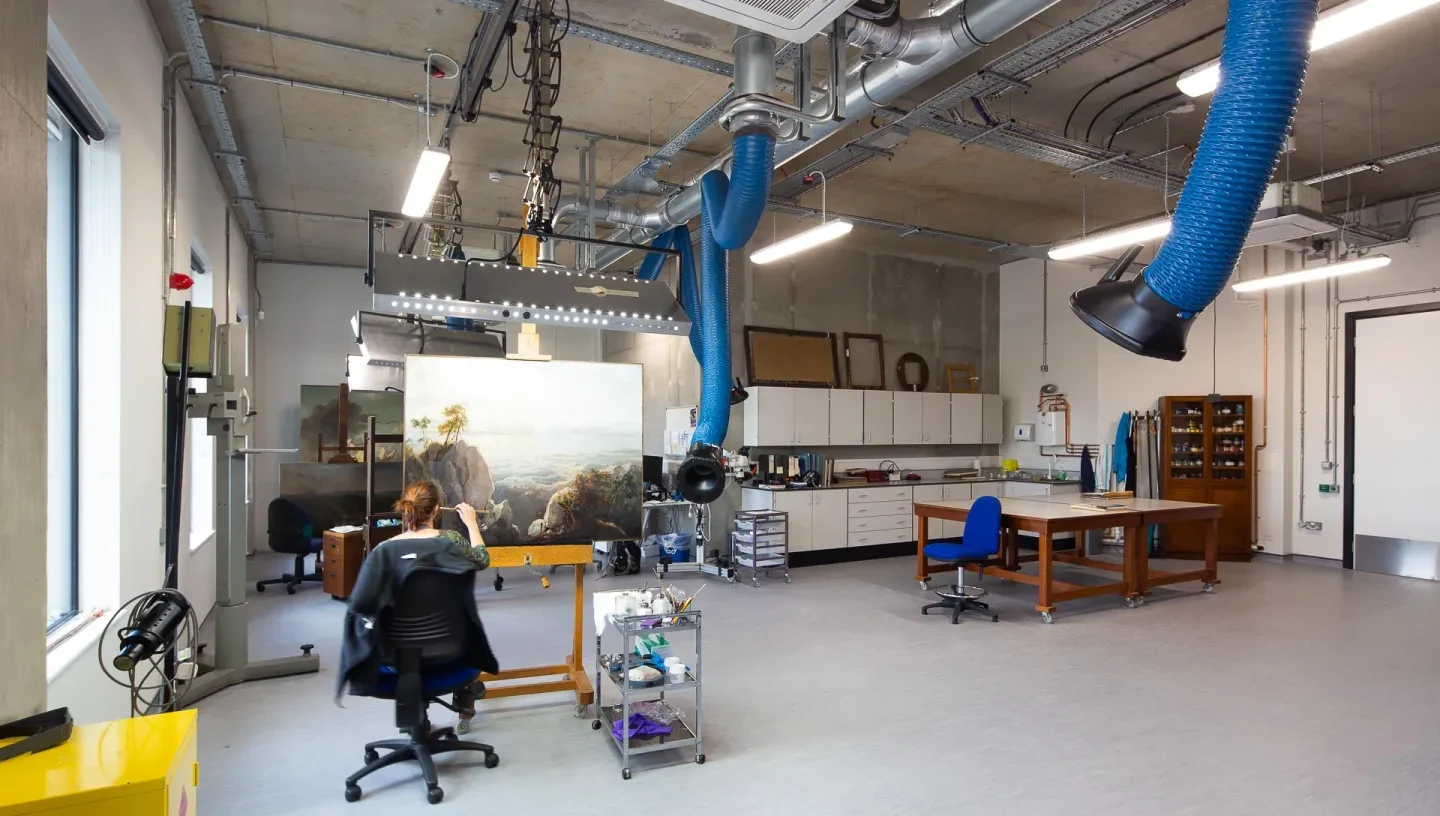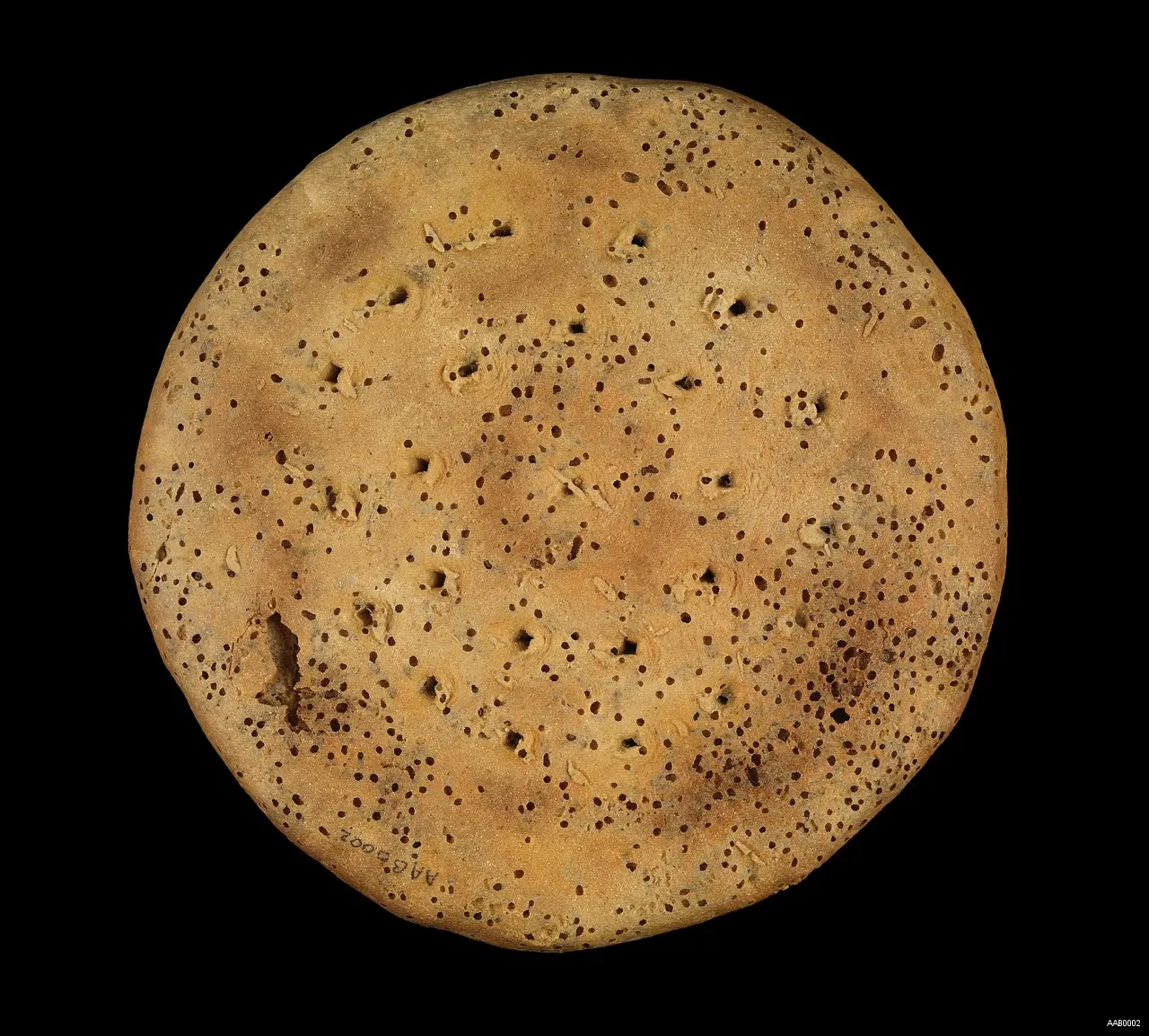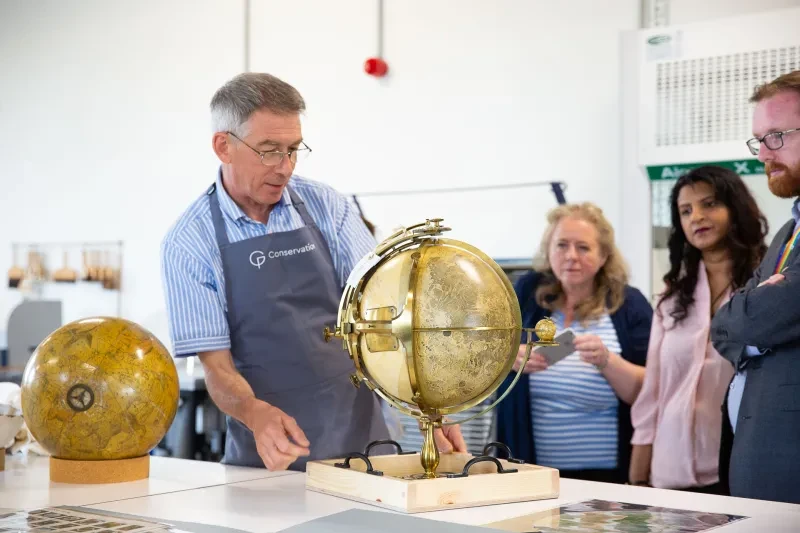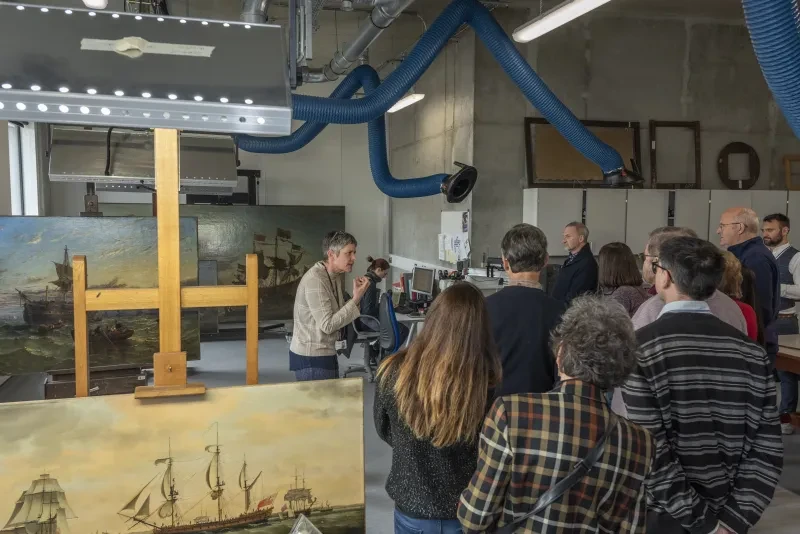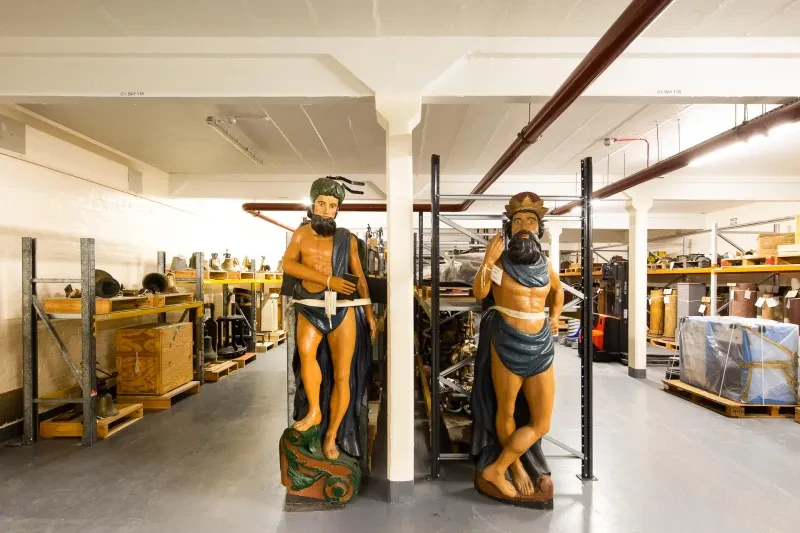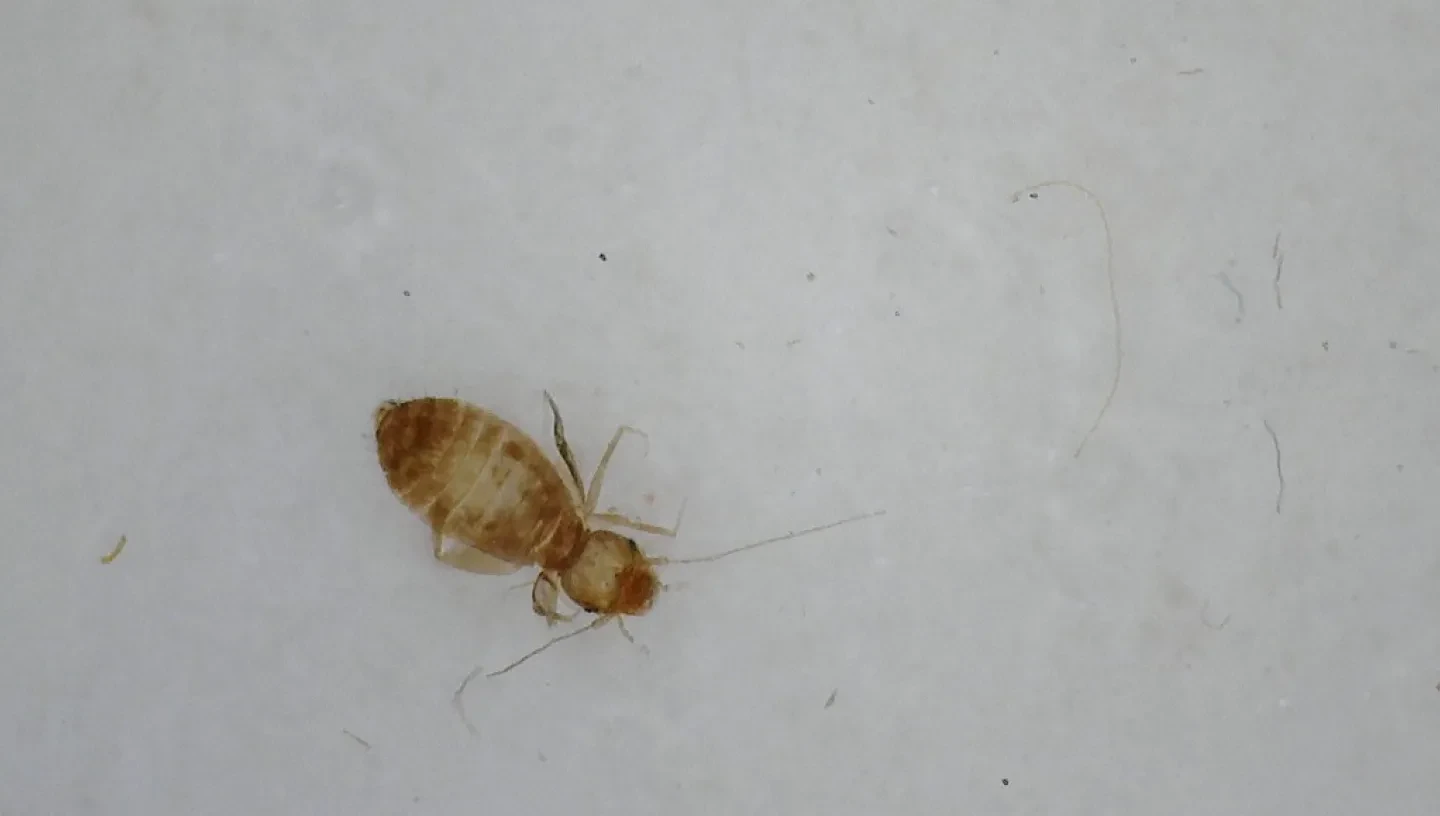
The Prince Philip Maritime Collections Centre is on the front line when it comes to keeping Royal Museums Greenwich's collection safe from moths, insects and other damaging pests.
With thousands of objects to care for, one of the conservation team's key jobs is to protect the collection from these unwelcome guests.
Pests have no prejudice when it comes to what they destroy. Whether it's an 18th century naval uniform or your favourite woolly jumper, the risks they face and the ways we can look after them are the same.
Here, we talk to three conservation experts to find out how they identify, prevent and treat the damage caused by pests.
Along the way, we ask for their top tips for keeping our own clothes safe from moths and other tiny household dangers.
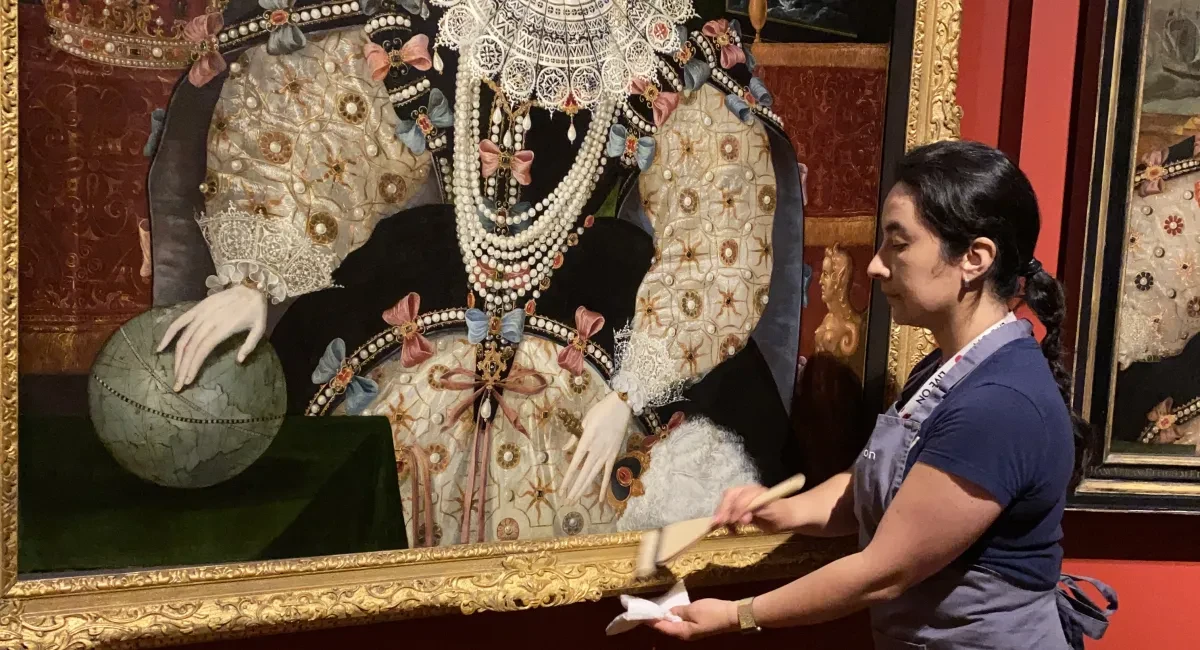
Meet the experts
Maria Bastidas-Spence, Preventative Conservator
Prevention is a key part of our Integrated Pest Management programme (IPM). This is the strategy we establish in order to prevent and minimise the risk of insect pests damaging the museum collections and historical interiors.
As a Preventive Conservator, I help with the distribution, placement and collection of insect traps in galleries, studios, archives and stores. Once the traps are collected, I assist with the identification of insects, recording of insect data and data analysis to create strategies for control.
As part of my role, I carry out routine cleaning of objects on display in galleries and display cases, in order to prevent the accumulation of dust. Regular visual inspection during routine cleaning allows us to quickly spot early signs of insect pests.
In addition, I am responsible for monitoring environmental conditions and helping to maintain conservation parameters for our specific type of collections. This is fundamental to reducing the risks of insect pest population, especially for insects that thrive under certain conditions like high relative humidity.
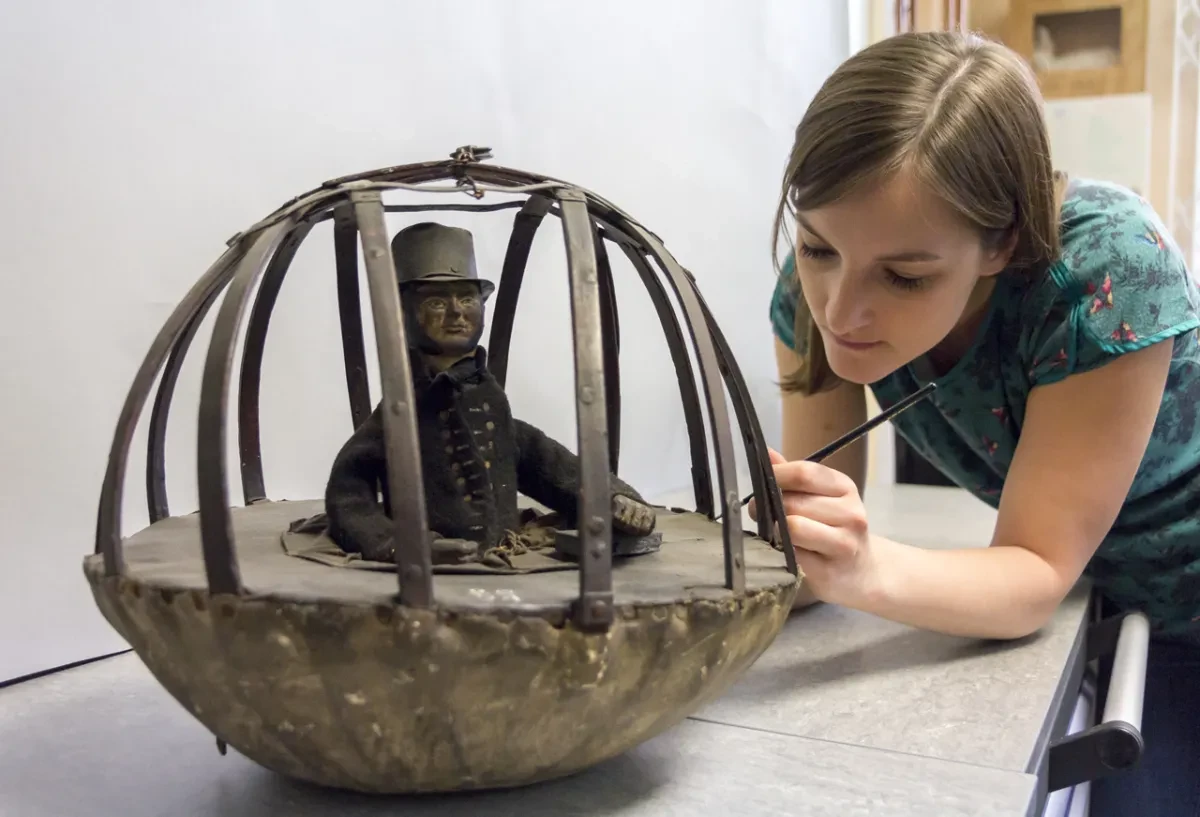
Karen Jensen, Object Conservation Manager
Together with Maria, one of our key tasks is co-ordinating the Museum’s Integrated Pest Management programme.
Royal Museums Greenwich covers the National Maritime Museum, Queen’s House, Royal Observatory, Cutty Sark, Prince Philip Maritime Collections Centre and three collections storage facilities. This not only geographically covers a large area with numerous buildings, but also houses a vast and varied collection of objects.
This is a huge undertaking and we therefore rely on help from other members of staff from textile conservation, collection storage team, Cutty Sark shipkeeping team and the Library and Archive team. As a network we monitor almost 400 active insect traps across the sites.
Co-ordination involves working closely with this staff network to identify areas of increased activity, investigating ‘hot spots’ of activity to determine where the insect pests are hiding or possible food sources and using target treatments to reduce insect pest activity.
As object conservators, we work with a wide variety of objects in the museum collection. Taxidermy, furniture, ethnographic and food-based collections are all categorised as collections at high risk of insect pest damage. Conservators regularly do visual inspections of high risk objects, and if a pest infestation is discovered, we will carry out a range of treatments to eradicate the insect pests.
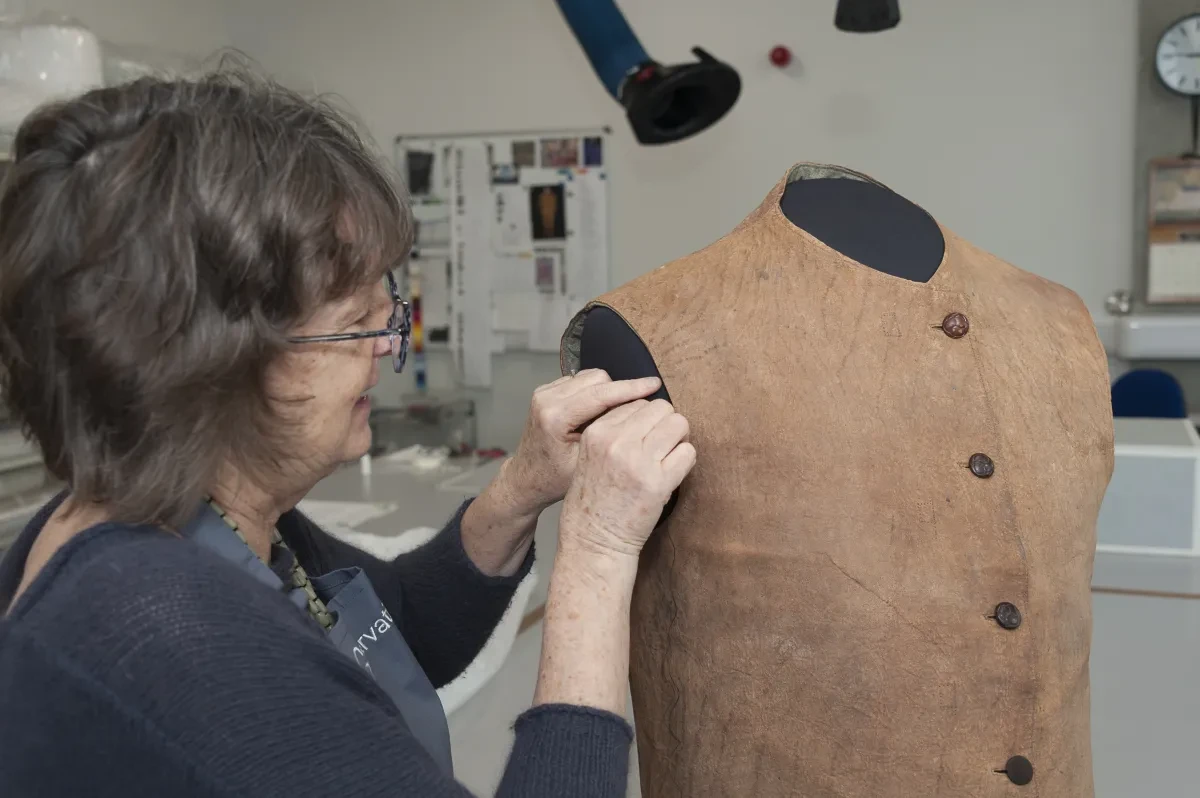
Nicola Yates, Textile Conservation Manager
As textile conservators, we are constantly aware of the dangers that insect pests can inflict on a collection.
Because we have such large holdings of textiles in one place, it is even more important that we are constantly on the lookout for any signs of attack. We have a number of measures and procedures in place to help prevent attacks, including an Integrated Pest Management programme.
When a new textile comes into the museum one of our first jobs is to isolate it from the rest of the collection until we know it is free from pests. If it is safe to freeze the object, and not all can be, it will be frozen at -30 degrees Centigrade for 72 hours. This will kill off the pests at all stages of their life cycle. The item is then safe to take into the studio and stores.
If freezing is not possible, we will double bag the object and quarantine it for several months prior to it going into store.
In the textile conservation studio, we give objects a thorough visual check inside and out, followed by a careful, very gentle, low-powered vacuum, using a soft brush. This helps to clean the fabric and remove any remains that might attract future pests. Many of our textiles have outer wrappings such as cotton or Tyvek covers or may be wrapped in acid-free tissue. They are then stored in a controlled environment, without windows, in cupboards designed to minimise the access of dust, dirt and insects.
It is good to keep the storage areas clean and ordered which helps when checking for any new signs of insect attack. It is also good practice to check through the cupboards on a regular basis; the pests do not like to be disturbed!
What are museum pests – and how can you tell the difference between an insect and pest?
Insects are considered a museum pest (or insect pest) when they have the ability to eat materials on Museum collection objects – for example wool, silk, fur, feathers, wood and paper.
Royal Museums Greenwich has such a vast collection of objects made from a wide range of materials, and therefore identification of the specific insect pests that can find these materials attractive is crucial.
There are three main groups of insects that are considered pests for Museum collections: protein-eaters (moths and beetles consuming animal based materials such as wool, feathers, fur), starch-eaters (beetle consuming materials such as wood, some food based objects) and relative humidity indicating insects (silverfish and booklice consuming paper based materials).
Insects such as spiders, ladybirds and flies regularly wonder into museum buildings, but these are not classified as pests because they do not harm the collection.
All members of staff who look at insect traps are trained in insect pest identification. This training is specific to the types of insects found in museum collections and which could damage (eat) the collection materials. Through this training, we are taught the characteristics of each pest and how to correctly identify them – for example, we look for if they have spots on specific parts of their bodies, the colour and shape of the wings, the antenna shape, etc.
To help the identification process, we have reference images and samples of the insects collected by our team of conservators. All of the insect pests found in museums are less than 10mm (1cm) in size and therefore we use high-magnification microscopes in our conservation laboratory to aid the identification of insects found on traps.
What damage can pests cause in museums?
The materials with the largest threat from insect pests are animal-based textiles, hair, fur or animal skins, feathers and horn.
These protein-eaters create irregular shaped holes in materials and leave behind frass (insect poo). If moths are present webbing or cocoons can also be evidence of activity. If left undisturbed for a period of time, the damage can be extensive – resulting in large holes, bald patches of fur or complete destruction of hair and feathers.
The most common protein-eating insect pests are moths (case-bearing clothes moth and webbing clothes moth) and carpet beetles (Guernsey, Varied, Brown and two-spot carpet beetles).
Some insect pests like to eat starch-based materials, for example Furniture beetles or Biscuit beetles (starch-eaters). Furniture beetles can consume wood, particularly soft woods and other objects like paper made from wood pulp. This means that in a historical house they can feed on floorboards, furniture, picture frames, sculptures, and even books. Fortunately for museums and historical houses, furniture beetles need a very high humidity to thrive and therefore are unusual under normal museum conditions.
When active, Furniture beetle larvae bore into wood and live undiscovered for thee to five years inside the material, creating a secret network of tunnels. The main visible signs of furniture beetle activity, are the ‘flight holes’ created by adults emerging and the subsequent wood powder and frass that comes out of these holes.
Another starch-eater, the Biscuit beetle likes to eat hard, dried vegetable material including baskets, biscuits, nuts and objects made with dried plants (particularly in our ethnographic collection). The damage caused by these beetles small holes and tunnels, with material and frass deposits.
Relative humidity indicating insects are pests which only thrive in very moist conditions (higher than 75% relative humidity), such as silverfish and booklice. Silverfish and booklice feed on paper-based collections, causing damage to manuscripts, books, wallpaper, inks on paper, photographs, prints and drawings.
Although it is unusual for museums to experience the moist conditions required for these insect pests to thrive, cold materials such as tiles, concrete and metal racking can create micro-climates (or localised moist conditions) on which the insects can thrive – many people will be familiar with silverfish found in their tiled bathrooms.
Due to their small size, both silverfish (1-15mm) and booklice (1mm) feed by scraping or eroding the materials. Damage is very rare and usually only discovered if large numbers are feeding on single items – resulting in a grazed appearance, thinning and ragged holes.
Moths and beetles (protein and starch-eaters) start their life cycle when females lay eggs on food sources or attractive materials. These eggs hatch to produce larvae.
It is during this larvae stage that these insect pests cause the most damage. They are highly mobile and if undisturbed can continue feeding on materials for several months throughout their larvae stage until the temperature is high enough to complete the cycle.
When conditions are correct, the larvae will develop through the pupal stage to become an adult moth or beetle. This is why we often see moths and beetles flying around during summer months, more than any other time of the year. The adults however do not cause any damage to materials – their only purpose to mate and reproduce.
How to control pests in museums
Insect pests are a persistent threat to the collection, as they are small, highly mobile and can thrive in museum environmental conditions. As a result it is not usually practical within a museum or heritage setting to completely exclude all insect pests from a building.
The focus of the Integrated Pest Management programme is therefore placed on denying insect pests a suitable environment where they can feed, breed and grow in population to become an active infestation.
The programme has two main preventive activities: monitoring and cleaning.
Monitoring is done by placing insect traps in locations across our galleries and stores. The best place to put them is on floors, near to doors, in undisturbed areas, in corners of rooms and behind or under furniture. In addition, we place traps in spaces where we are exhibiting objects that we know are made from materials that are highly attractive to insect pests.
After three months, these traps are collected for identification: recording the type of insect, the number of each type of insect pest, and the life cycle stage of the insect. When the number of insect pests is high in a trap it means that we have a higher risk to the collection. The data is collated and compared to previous seasons, so that we can take further actions if a pest is becoming more than a problem.
The other activity we do to prevent damage by insect pests is cleaning regularly. This is very important, as insect pests like undisturbed, dark and cosy places with a food source. The food source could be a wool carpet, curtain, tapestry, wardrobes, sofas or any food leftover – however the most attractive food to protein-eating insect pests is dust!
Dust is an accumulation of a range of minute particles including skin, hair and textile fibres, which are attractive materials for protein-eaters. If cleaning is not done regularly, it is easier for insects to complete their lifecycle, reproducing and thriving in our own buildings.
How do you treat any damage to the collection?
If damage has already happened we might look at supporting the holes from behind with a new, similar fabric that has been dyed to blend in with the original. This might be a patch for smaller holes or a full support for a large damaged area.
The fabrics are held in place and further supported with conservation stitching, called laid and couched stitching. Smaller holes may have a dyed nylon net overlay stitched in place to prevent further losses, as can be seen on the linings of the pocket flaps, before and after conservation.

Top tips for keeping your clothes safe from pests
Search for pest clues
Take some time to do a search around your home, particularly those places we leave untouched for some time: wardrobes, under and behind big pieces of furniture, under rugs, behind curtains, behind old boxes in attics, inside fireplaces and cupboards.
Can you see any powdery dust coming from holes of objects made from wood? Are your winter and summer clothes folded for long periods of time, and when unfolded did you spot some irregular holes?
If the answer is yes, thoroughly vacuum the area where you found pest signs. Store away the clothes or fabrics with damage in sealed bags until you can find a treatment.
Shelter pest-attractive items
The best shelter for clothes made of wool, silk, or other fabrics attracted by pests is a lidded plastic box. You can also use vacuum-sealed bags to store pillows and duvets that are filled with feathers, which also helps to reduce storage space inside your wardrobes and chests.
If you can recycle food containers made of plastic or glass and reutilise them to store food in your kitchen and items in wardrobes, you'll also be making a more sustainable storage choice.
Spring cleaning isn’t just for spring
Remember that cleaning regularly is the best way to identify signs of pests and to remove food sources for insect pests.
Open windows during the cleaning process, letting light and air get into undisturbed spaces - insect pests will run away immediately!
Remove any dead insects like spiders or ladybirds, as they can become a food source for insect pests.
Clean bookcases, including between and behind books. Clean behind curtains and around windows.
During cleaning, keep searching for pest clues: store away the items that you know are going to be damaged by pest insects.
Try repairing your clothes yourself
If your clothes have been damaged, it may be possible to use darning techniques to prevent small holes getting any bigger.
Use a yarn similar in colour and weight to the original if you want to conceal the repair. Larger holes may require a fabric patch stitching to the damaged area, which is difficult to disguise but may help stop the hole getting any bigger.
